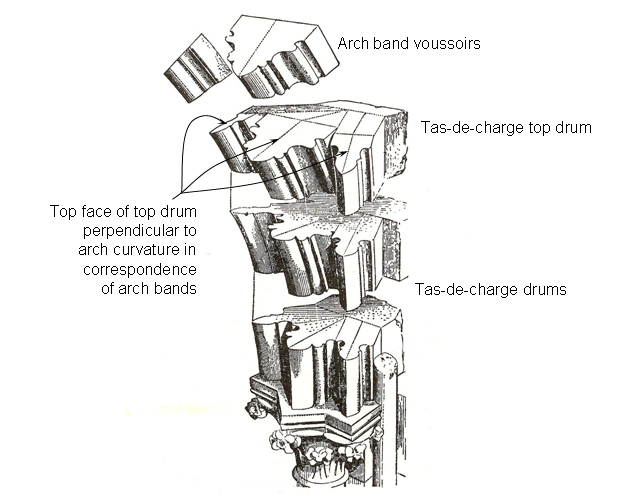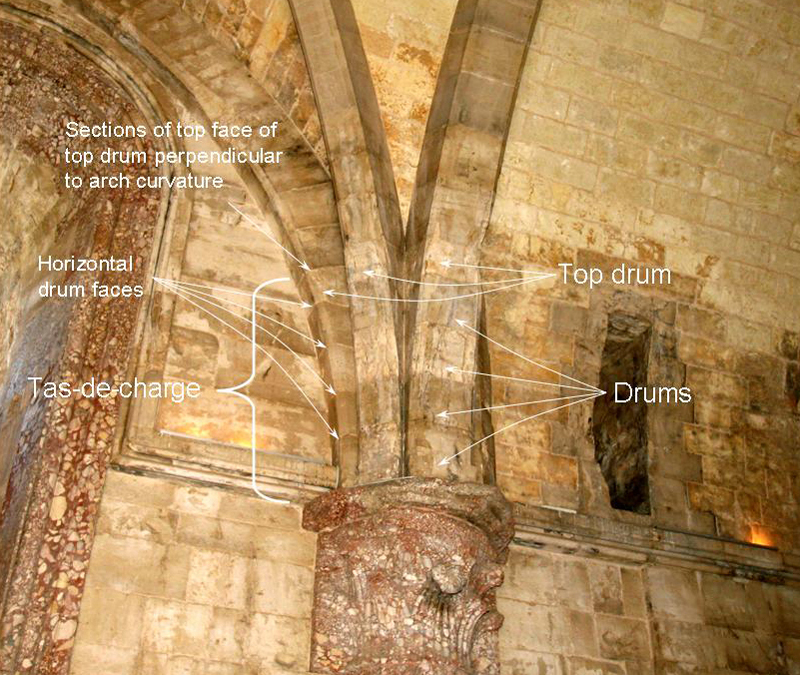Page 10
Tas-de-Charge
The tas-de-charge is a feature of Gothic architecture resulting from the practical solution to stone working for meeting the structural needs at the cross vault corners where groin and transverse arch bands merge into a single spring stone. A feature amply discussed by scholars and historians, such as Violet-le-Duc in his study of medieval buildings, the tas-de-charge is also part of the construction technology at Castel del Monte.
The tas-de-charge special blocks are sculptured in the shape of the stone arches that they replace, to provide visual continuity to the rib and transverse arches all the way down to the spring line, figure 21.

Figure 21. Tas-de-charge drawing by Violet-le-Duc.
The tas-de-charge is composed of a number of large stone blocks, much like drums, cut with horizontal and parallel surfaces, because the trust they experience is strongly in the vertical direction. They extend deep into the wall they are attached to, thus providing anchoring in the wall masonry, which strengthens the arches and the cross vault.
The tas-de-charge can cover up to one third of the arch height from spring to crown. As discussed by Fitchen, the tas-de-charges reduces the span of the arch that the supporting timberwork has to cover. (Fitchen 1961, 138.)
One of the features of the tas-de-charge is that the top drum has sections of the top surface in correspondence of the rib and transverse arches shaved perpendicular to the arch curvature, serving as a bed for the arch voussoirs, figure 21.
The tas-de-charges at Castel del Monte rest on the capitals of the semi-columns that merge into the walls, figure 22.

Figure 22. Example of tas-de-charge at Castel del Monte.
Based on a photographic analysis (figure 22), the tas-de-charge drums are distinguishable by the horizontal grout lines and the stone grain and color pattern that distinguishes the drums verticalli. It is also likely that the drums on the upper sections may be composed of separate stone blocks because of their large dimension.
The tas-de-charge is another structural feature, besides the ribbed groins, transverse arch bands, and Gothic arches, that ties Castel del Monte to northern European Gothic architecture in the basic stuctural forms.

